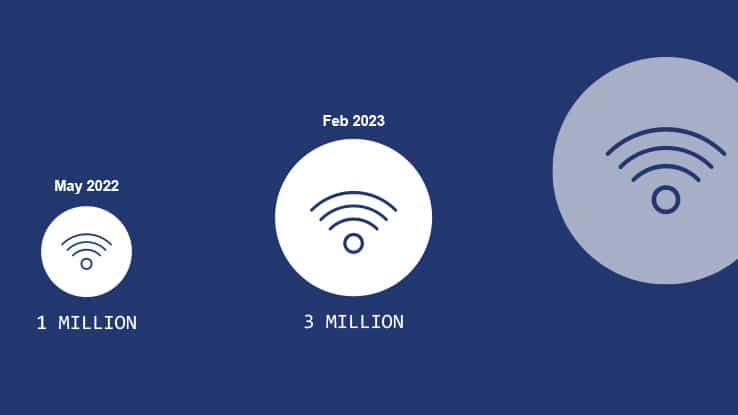A short intro to Openroaming
The “Why?” and “What?” of OpenRoaming
In this post, we’ll give a brief overview of the drivers (Why?) behind the OpenRoaming initiative and what it is (What?). This is one of the sections in our extensive 52-page White Paper that covers all you need to know about OpenRoaming. Download the white paper below to get the complete picture of OpenRoaming and what it means for you. We will continue to post chapters from the white paper, and here you can find all relevant OpenRoaming Insights to date.
All You Need To Know About OpenRoaming – White Paper
This is an excerpt from our white paper, All You Need To Know About OpenRoaming. The full white paper is available here if you like what you read. Don’t hesitate to contact us if you have any questions.

OpenRoaming
Why?
In an increasingly connected world, users expect seamless and secure access to the Internet wherever they go. They get that when using their cellular connections without paying much attention. Wi-Fi has become an integral part of our daily lives. However, connecting to public Wi-Fi networks, especially when roaming across different locations or networks, can be a cum-bersome experience. It often involves a login experience through a captive portal, and the communication has no or weak encryption over the air. As a result, users will stand a risk of being wiretapped. The OpenRoaming Wi-Fi roaming initiative was initially conceived and launched by Cisco but is today operated by the Wireless Broadband Alliance (WBA). It aims to create a global, secure, user-friendly Wi-Fi roaming ecosystem. With OpenRoaming, Wi-Fi becomes just as secure and seamless as Cellular.

OpenRoaming
How?
OpenRoaming is a Passpoint-based roaming scheme bringing together Identity Providers (IDP) and Access Network Providers (ANP) into a so-called open roaming federation with currently (November 2023) over 3 million Wi-Fi hotspots and counting. The word ”provider” in the IDP and ANP terms is not limited to the traditional meaning of provider as in Communications Service Provider (CSP). On the contrary, an ANP can be, e.g., a hotel or a shopping mall, and an IDP can be a mobile handset manufacturer or a social network. For the first time, a service provider such as a mobile operator can seamlessly roam with an enterprise organization such as a shopping mall.
OpenRoaming offers two base Passpoint Roaming Consortium Organization Identifiers (RCOIs) for accessing the service: One for the settlement-free use case and one for the settled use case. Both can have “extensions” to provide ANPs and IDPs with better control over the service—more about this in an upcoming post “Staying in Control in the OpenRoaming”. The rapid growth of Wi-Fi hotspots joining the OpenRoaming federation makes us convinced that the “everywhere” vision in the title of our White paper is soon within reach.




